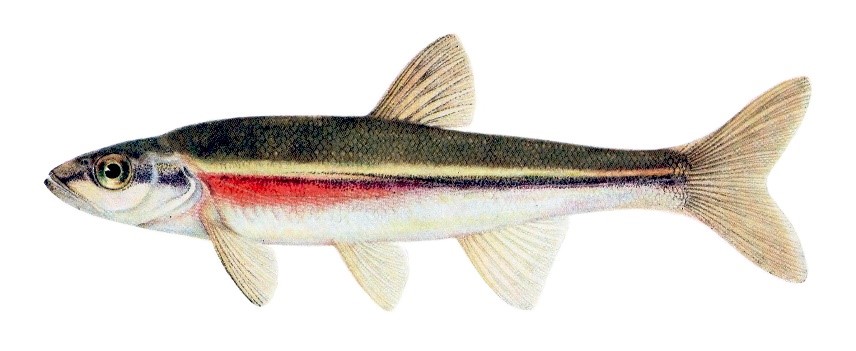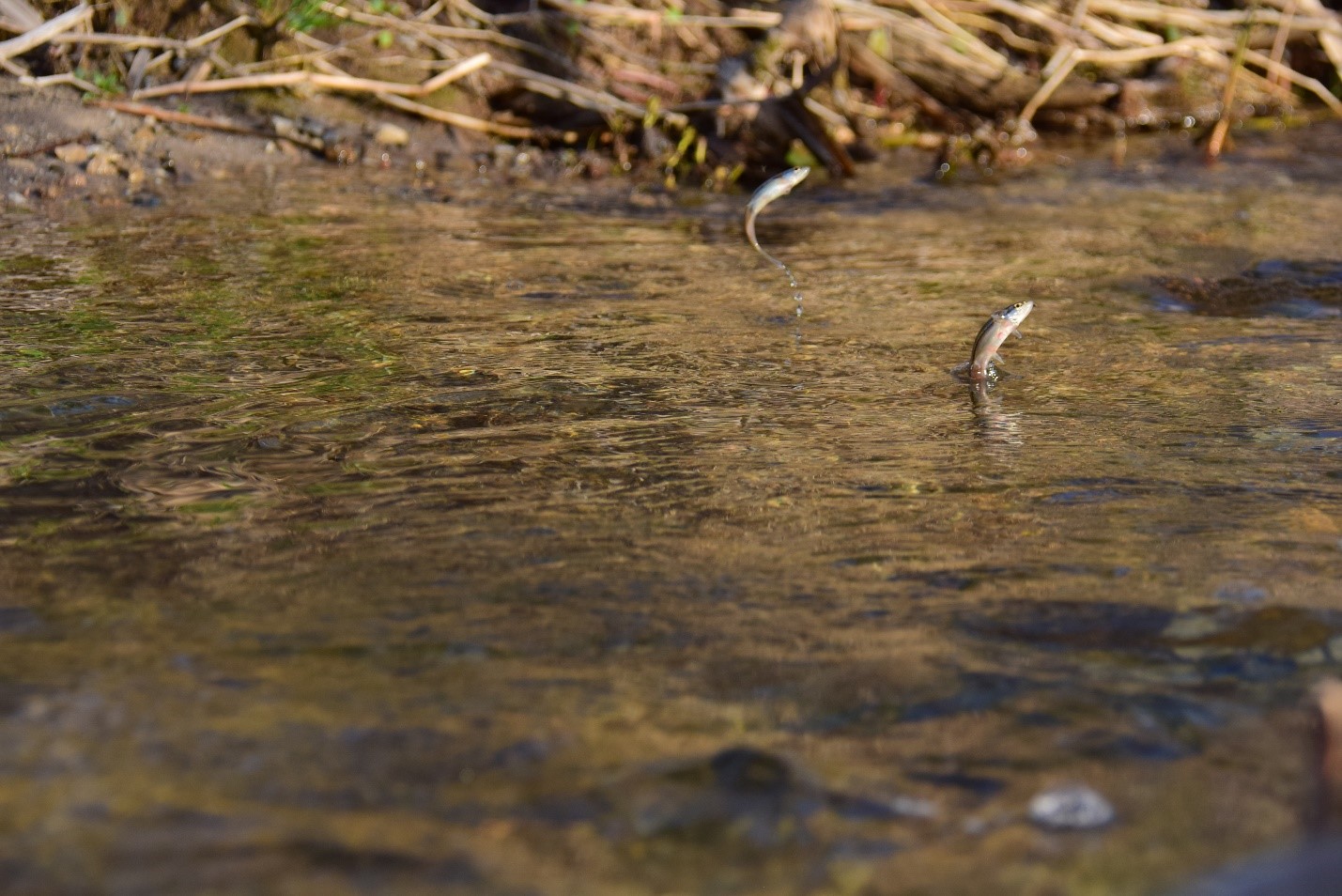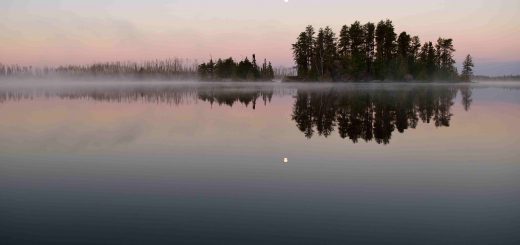The many stressors faced by the endangered Redside Dace
Redside Dace (Clinostomus elongatus; Figure 1) are a small, vibrant and endangered minnow found in streams feeding the Mississippi River Drainage, Great Lakes Basin, Ohio River, upper Susquehanna River and parts of Southern Ontario, Canada (Scott & Crossman, 1998; Serrao et al., 2018). There is one northern population near Sault Saint Marie (ON) but nearly 80% of Canada’s Redside Dace distribution is in the Greater Toronto Area (GTA) and surrounding regions (Reid & Parna, 2017; Serrao et al., 2018). The GTA has been growing steadily and population growth implies land-use change to accommodate the expansion. Although we do not necessarily notice the consequences of land-use change, Redside Dace certainly do. They used to inhabit small, cool, shallow pools in streams around the GTA, but habitat loss has caused a massive decline in populations and now they are difficult to find in the area (Poos et al., 2012).

Urbanization is proving a major challenge for these fish over much of their range, since development usually means warmer waters. The heat island effect is a term used to describe the increased temperature in urban areas caused by buildings and asphalt i.e. surfaces that absorb excessive heat relative to more natural structures like trees, grass and dirt. This “localized” heat can quickly change the temperature of surrounding waterbodies. For example, when it rains in a city during the summertime, water might run down a building, onto the road and into some drainage area, all while taking up heat from these artificial surfaces. Eventually, this warmed water makes its way to a local waterbody, changing the external and internal environment of the fish (they are, after all, ectotherms). Of course, we must not forget the role of climate change in exacerbating the problem. These changes can impact the fish at every level, and since these fish have been disappearing at an alarming rate, it is safe to say the changes are not positive.
Creating infrastructure to support a growing population can put additional pressures on these animals. Building and road development requires the removal of natural vegetation which can act as a filter for water before it enters a waterbody. These natural vegetative filters are known as riparian buffers. In Ontario, the Redside Dace habitat regulations require a 30m riparian buffer between streams hosting Dace and any construction project that disturbs the soil (MNRF, 2016). Vegetation acts to keep sediment and nutrients in place and without it, these compounds most often end up in water. Sedimentation can alter the visibility of water which presumably has detrimental impacts on feeding in aerial insectivores like the Redside Dace (Figure 2), although this problem has not been well studied. Contamination by sediment can also influence the abundance and diversity of invertebrates that the Dace rely on for food (Burton, 1988; Daniels & Wisniewski, 1994).

In the winter, Canada can get quite cold. Over the past few years, the average temperature in January, the peak of winter, for Toronto was around -5.5 °C or 22 °F. Canadians (and much of North America) rely heavily on road salt to keep our roads clear and safe. The salt eventually makes its way into the surrounding water, which can be bad news for freshwater fish. Previous studies have demonstrated that at environmentally relevant concentrations, road salts (sodium chloride NaCl; magnesium chloride MgCl2; calcium chloride CaCl2) can have detrimental impacts on the growth and survival of fishes (Hintz & Relyea, 2017). Urbanization means fast moving, warm, turbid, salty water and frankly we do not know enough about how each individual stressor impacts fish, let alone how the combination of these factors impact fish.
In order to protect these animals, we need to carefully plan our development projects to maximize green space. Natural vegetation slows down and filters water before it moves into a waterbody because the plants actively take up many of the nutrients. We also need to invest into research on the individual and combined effects of each stressor on Redside Dace and other vulnerable animals. Although Redside Dace are unlikely to reoccupy their historically used streams on their own, reintroduction projects that put Redside Dace in reclaimed and protected streams seem a likely way forward.
References
Burton, G.A., 1988. Stream impact assessments using sediment microbial activity tests. In Chemical and biological characterization of municipal sludges, sediments, dredge spoils, and drilling muds. ASTM International.
Daniels, R.A. and Wisniewski, S.J., 1994. Feeding ecology of redside dace, Clinostomus elongatus. Ecology of Freshwater Fish, 3, pp.176–183.
Hintz, W.D. and Relyea, R.A., 2017. Impacts of road deicing salts on the early-life growth and development of a stream salmonid: salt type matters. Environmental Pollution, 223, pp.409–415.
Ministry of Natural Resources and Forestry (MNRF). 2016. Guidance for Development Activities in Redside Dace Protected Habitat. Version 1.2 Ontario Ministry of Natural Resources and Forestry, Peterborough, Ontario. iv+54 pp.
Poos, M., Lawrie, D., Tu, C., Jackson, D.A. and Mandrak, N.E., 2012. Estimating local and regional population sizes for an endangered minnow, redside dace (Clinostomus elongatus), in Canada. Aquatic Conservation: Marine and Freshwater Ecosystems, 22, pp.47–57.
Reid, S. and Parna, S., 2017. Urbanization, long-term stream flow variability, and Redside Dace status in Greater Toronto Area streams. Fisheries and Oceans Canada = Pêches et océans Canada.
Scott, W.B. and Crossman, E.J., 1998. Freshwater Fishes of Canada Galt House Publications Ltd. Oakville, Ont. Canada.
Serrao, N.R., Reid, S.M. and Wilson, C.C., 2018. Conservation genetics of redside dace (Clinostomus elongatus): phylogeography and contemporary spatial structure. Conservation genetics, 19, pp.409–424.



